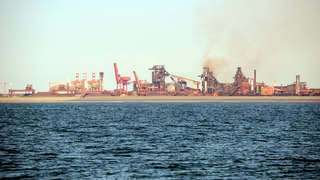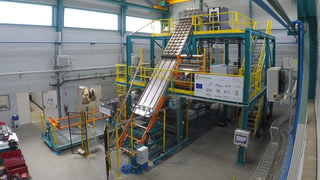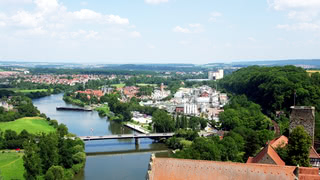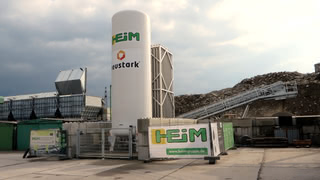Uncertain Future for ArcelorMittal's Smart Carbon Projects in Belgium
Steel giant ArcelorMittal has been reluctant to invest into Hydrogen-based steelmaking. But its alternatives it calls Smart Carbon are not doing great either. Its flagship Steelanol project in Belgium could be shut down soon, and the closely related Torero project faces technical challenges.
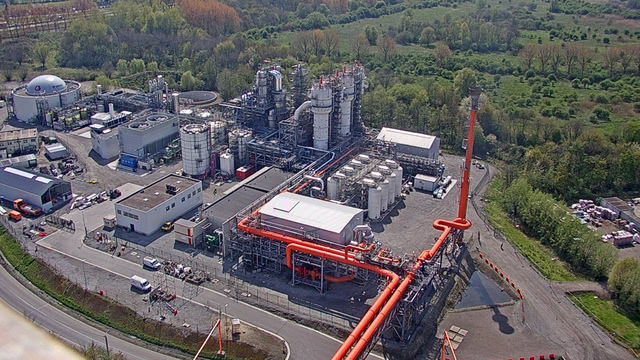
ArcelorMittal is the world's second-largest steel producer. Unlike many of its competitors, ArcelorMittal has not been eager to invest in Hydrogen-based steelmaking, which many believe is the most plausible path towards climate-neutral steel production.
ArcelorMittal communicates that it does not see Hydrogen as the only path towards steel decarbonization and advocates for an approach it calls Smart Carbon as an alternative to Hydrogen-based technologies. Yet, ArcelorMittal recently announced that its flagship Smart Carbon project Steelanol in Belgium may face a shutdown.
The production of steel is a massive contributor to climate change, primarily due to its reliance on coal. Steelmaking does not use coal simply as an energy source. Coke, a form of carbon-enriched coal, is used in a chemical process in blast furnaces. It acts as a reduction agent, removing oxygen from iron oxides.
An alternative technology to blast furnaces is direct reduced iron, or short DRI. It is already used for a sizeable portion of steel production, existing DRI plants usually run on fossil gas. Switching from coal to gas reduces emissions substantially, but obviously, it still relies on a fossil fuel.
However, DRI-based steelmaking could also operate on green Hydrogen. Pioneers of this technology are the Swedish companies LKAB and SSAB with their Hybrit project. Other steel companies, particularly in Europe, have also embraced Hydrogen as the solution for steel's large carbon footprint.
ArcelorMittal, which operates steel plants around the world and in many European countries, has sent mixed signals when it comes to its climate transformation.
No Investment Decisions for Hydrogen and DRI
ArcelorMittal announced in 2020 that the company is committed to being climate neutral by 2050 and had plans for Hydrogen-based steelmaking at multiple sites in Europe and in Canada. However, in a press release in November 2024, ArcelorMittal indicated that it would not make any final investment decisions for Hydrogen-DRI projects in Europe, and wrote: "Green hydrogen is evolving very slowly towards being a viable fuel source and natural gas based DRI production in Europe is not yet competitive as an interim solution."
In June this year, ArcelorMittal announced that it would not pursue the construction of DRI plants at its sites in Eisenhüttenstadt and Bremen in Germany. The German government had already agreed to provide substantial subsidies for this transformation, but ArcelorMittal returned the subsidy grant.
It is unclear what this means for the affected sites, but it appears unlikely that coal-based blast furnaces can continue operating within the EU for the upcoming decades. While the EU shows signs of being less ambitious about its climate policy lately, if the core plans for the European Emission Trading System remain intact, operating high-emitting industrial facilities will almost certainly become unviable in the 2040s.
ArcelorMittal has, however, previously communicated that the company believes there is a path to zero-carbon steelmaking that involves blast furnaces. In its latest Climate Action Report from 2021, the company writes that "we believe it is sensible to continue to develop two pathways that have the potential to achieve zero-carbon emissions steel: Innovative DRI (Direct Reduced Iron) and Smart Carbon. A third pathway, Direct Electrolysis of Iron, also represents considerable potential – albeit within a longer time horizon."
Innovative DRI is the path that would involve Hydrogen as a key lever to reduce emissions. The mentioned Direct Electrolysis of Iron is a technology in its early stages. In 2023, ArcelorMittal announced plans to build an industrial-sized plant with this technology called Volteron, but there have been no updates since then.
What ArcelorMittal calls Smart Carbon involves a range of technologies. What they have in common is that they assume the continued operation of blast furnaces. ArcelorMittal claims that Smart Carbon provides a pathway towards zero-carbon steel, or even "potentially making the route carbon-negative", but it is hard to see how this should plausibly work.
One could say that ArcelorMittal's strategy is not to bet on a single technology, but keep its options open. But Smart Carbon has caught the ire of climate campaigners.
"ArcelorMittal's 'Smart Carbon' strategy is not a credible decarbonization pathway. It means continuing to burn coal in blast furnaces while trying to slightly offset the resulting emissions," says Toko Tomita from SteelWatch, an international organization campaigning for ambitious emission reduction in the steel industry.
Steelanol converts Steel Mill Off-Gases into Ethanol
While Smart Carbon involves multiple potential technologies, the largest actual implementations are two projects called Steelanol and Torero at ArcelorMittal's steel plant in Ghent, Belgium.
This steel plant is by far the largest emitter in Belgium. Together with its attached power plant, which burns steel mill off-gases, it emits up to 9 million tons of CO₂ annually. It is responsible for more than 10 percent of Belgium's CO₂ emissions.
Both the blast furnace itself and other parts of the process, like the coke plant, produce energy-rich gases, including Carbon Monoxide and Hydrogen. Today, steel plants often burn them in power plants and generate electricity. On ArcelorMittal's site in Ghent, those gases are combusted in the Knippegroen power plant, operated by Electrabel, a subsidiary of Engie. This power plant emits more CO₂ than the blast furnace itself.
Both Carbon Monoxide and Hydrogen can be used to reduce iron ore. Another option is, therefore, to use the off-gases in the blast furnace itself, and this is sometimes already done.
Steelanol is based on a different idea of how to use these off-gases. It uses a technology called Carbalyst, which ArcelorMittal has developed in collaboration with the US company LanzaTech. It converts steel mill off-gases in a biological process into Ethanol (aka: standard alcohol). It can be used, for example, as a fuel or a feedstock in the chemical industry.
Steelanol can be described as a Carbon Capture and Utilization (CCU) technology, but there is a key difference from many other CCU technologies widely discussed. Often, CCU refers to technologies that turn CO₂ and Hydrogen into higher-energy chemicals. Steelanol, however, uses primarily Carbon Monoxide and Hydrogen. (It can also use some amount of CO₂ in a water-gas shift reaction, but it is not the main component.)
While it is not wrong to say that Steelanol is a CCU technology, it is not primarily a CO₂ utilization technology. That is not necessarily a bad thing, but it is important to understand the difference.
Because it uses energy-rich Carbon Monoxide and Hydrogen from the steel mill off-gases, it does not need large amounts of additional Hydrogen, and thus also not the staggering amounts of clean energy that other CCU projects often require.
What does a project like Steelanol mean for the plant's emissions? It's complicated. It is important to understand that the carbon embedded in Ethanol produced by this process will in almost all cases still end up in the atmosphere. It is either used as a fuel or as a chemical feedstock. Fuel is burned and turned into CO₂. Chemical products will usually either degrade or end up in an incinerator, so that does not keep carbon out of the atmosphere either.
This is, so far, the classic issue with all fossil-based CCU projects. They only keep carbon out of the atmosphere temporarily, and they cause a double-use of carbon. Such projects can lead to an overall CO₂ reduction, but those emission reductions are inherently limited and should not be counted for both the fuel and the plant that provides the carbon.
I covered the issue of CCU from fossil emissions last year, using an example of a project in France also involving ArcelorMittal. The companies Infinium and Engie had previously announced to build an E-Fuels production facility called Reuze in France, utilizing CO₂ from ArcelorMittal's steel plant in Dunkirk.
(The Reuze project appears abandoned. Its web page no longer exists, and the involved companies have not announced any updates on it lately. Infinium has not replied to questions about the project's status.)
In the case of Steelanol, the emission accounting is even more complex. The off-gases have been used before in a power plant, and by diverting them to Steelanol, it produces less electricity. If the produced Ethanol is used as a fuel, it is diverting an energy source from one use to another. How to account for that depends on various assumptions about replacement effects, existing fuel use, and grid carbon intensity.
When steel mill off-gases, which are a byproduct of coal use, are converted into Ethanol, it cannot be called a biofuel.
Yet, ArcelorMittal has claimed that Steelanol produces Bioethanol. To understand why, we have to look at Steelanol's sister project Torero. While a significantly smaller investment, Torero is a key part of the concept.
Torero: Biocoal from Waste Wood
When we talk about coal, we usually mean fossil coal, the main driver of climate change. However, historically, coal has been made from wood. To this day, such traditional charcoal is sometimes used in the steel industry. Several smaller charcoal-based steel plants are operating in Brazil.
Traditional charcoal is problematic as a climate solution, and that is not just because it may cause deforestation. Its production emits methane, which is a potent greenhouse gas.
Processes known as torrefaction or pyrolysis can convert woody biomass to biocoal or biocarbon with much lower emissions. There is no strict line between torrefaction and pyrolysis, but commonly, lower temperature processes are called torrefaction and higher temperature processes are known as pyrolysis. Both involve processing wood in a low-oxygen atmosphere.
ArcelorMittal's Torero plant is such a torrefaction process. In its 2021 Climate Action Report, ArcelorMittal writes that Torero utilizes waste wood that is hazardous and cannot be burned in an incinerator, or even waste plastics. (It should be obvious that coal made from plastic waste is not biocoal.)
While ArcelorMittal emphasizes the use of hazardous wood waste, the Torero project web page mentions the use of Type B wood waste. Wood waste is commonly categorized into Type A (cleanest) to D (with the highest amount of hazardous content). Type B refers to things like demolished furniture.
The technology for Torero has been licensed to ArcelorMittal by the Dutch company TorrCoal. In 2021, TorrCoal was acquired by another Dutch company called Perpetual Next.
Taking Steelanol and Torero together, it becomes more legitimate to claim that Steelanol produces Bioethanol. A certain amount of fossil coal in the blast furnace is replaced with biocoal, and for the share of that biocoal, the output product counts as biofuel. That does not mean that the exact carbon molecules within that Ethanol come from Biocoal. It involves a form of mass balancing.
However, according to multiple industry sources I spoke to, the Torero project is not working as expected, and technical difficulties are plaguing the project.
From publicly available information, it becomes apparent that ArcelorMittal has downsized the project from its original plans. In its 2022 annual report, the company wrote: "At the Ghent plant, two reactors will each produce 40,000 tonnes of bio-coal annually that can be used in the blast furnace as a substitute for coal. Construction of the €55 million project started in 2018: the first reactor is expected to start production in 2023 and the second in 2024."
In its 2023 annual report, the company writes: "The Torero industrial-scale demonstration plant will convert 88,000 tonnes of waste wood into 37,500 tonnes of bio-coal annually." A second reactor is no longer mentioned.
ArcelorMittal's last press release about Torero was in December 2023, when it announced that the project was "officially commissioned". ArcelorMittal has, since then, been mostly silent about Torero.
The project's web page has not been updated since March 2023, when it announced that the first waste wood was delivered "to perform the initial tests of the facility." The supplier of waste wood, listed as a project partner on Torero's web page, is the UK-based company Renewi. But I learned from Renewi that the company only provided some initial test deliveries to ArcelorMittal, and that Renewi is currently not delivering any waste wood to ArcelorMittal.
A spokesperson from Perpetual Next, the company owning the TorrCoal technology used by Torero, wrote to me: "I have discussed your email internally and would like to inform you that - unfortunately - we are unable to disclose any information about the project in question." Perpetual Next also mentioned that the technology was licensed to ArcelorMittal before Perpetual Next acquired TorrCoal.
The lack of transparency around Torero's actual performance is particularly noteworthy given that the project received substantial public funding. Torero received around 11 million euros through the EU's Horizon 2020 program, and the European Investment Bank provided a loan of 75 million euros for both Steelanol and Torero. (In addition to that, Steelanol received 10 million euros through Horizon 2020. Additional funding was provided by the Belgian and Flemish government.)
On the EU's web page about the Torero Horizon 2020 project, one can find a dissemination report listing how ArcelorMittal and its partners shared the results of this project with the public, including scientific papers, web pages, and press releases. The Horizon 2020 project ran until the end of 2024, one year after the plant's inauguration. However, almost the entire communication of the project happened before that.
A publicly funded research project that does not share any public information about its actual results? I asked the European Commission about it and learned that there exists a final report about Torero, but that will not be shared publicly. "The final technical report contains sensitive information that are not publicly disclosed," wrote Thomas Regnier, spokesperson for the European Commission. "The project has successfully demonstrated at TRL6-7 the technological pathway for the production of biocoal from waste wood feedstock. The plant is operational since December 2023, when it was inaugurated, and it is increasing productivity to achieve full operativity by end 2025."
ArcelorMittal threatens to shut down Steelanol
In late June, shortly after ArcelorMittal announced the cancellation of its Hydrogen projects in Germany, several news articles reported that the company is considering shutting down the Steelanol plant. According to The Brussels Times, Frederik Van de Velde, CEO of ArcelorMittal Belgium, said: "We're giving ourselves about a year to decide whether to shut it down."
Around the same time, ArcelorMittal published a statement about the status of the Steelanol project. In it, ArcelorMittal raises various issues with the current EU regulation that make it difficult to operate the plant profitably.
Communication between ArcelorMittal and representatives from the European Commission in 2021, which can be found on the Freedom of Information platform AsktheEU.org, provides additional insights.
Fuels that are made from off-gases of a fossil process cannot be sold as biofuels, but the EU does have a regulatory concept for those. They are called Recycled Carbon Fuels. However, in a case where those gases are diverted from a power plant, the EU regulation assumes that the lost electricity will be replaced with electricity of the average carbon footprint of the country where the power plant is located. In a 2021 letter to the European Commission, ArcelorMittal writes that "particularly the issue of replaced electricity linked to a current national power grid CO₂ factor would be highly problematic." ArcelorMittal also mentions this issue in its recent public statement.
ArcelorMittal also appears to be unhappy about the share of Ethanol it can sell as a biofuel. In its public statement, ArcelorMittal writes: "Under these rules, we achieve only very low percentages of Bioethanol — much lower than originally estimated." The issue is also mentioned in the 2021 letter to the European Commission, but it remains unclear from both sources what exactly ArcelorMittal expected to be different.
It certainly seems that ArcelorMittal had hoped for EU regulation that is more favorable for its technology. But another factor appears quite significant for calculating the biofuel share: how much biocoal has Torero actually produced? Given the lack of transparency around Torero, it is hard to tell.
Can Smart Carbon deliver Zero-Emission Steel?
Both Steelanol and Torero are part of ArcelorMittal's Smart Carbon strategy, and there is a larger question to ask: can Smart Carbon actually deliver what ArcelorMittal promises?
The organization Steelwatch has calculated that, even if fully realized, emission reductions from both Steelanol and Torero would amount to 3.6 percent. SteelWatch writes: "The emissions savings of these 'flagship' initiatives are meagre even if fully realised, but the costs are not. Capex alone is 55 million Euro for Torero and 200 million Euro for Steelanol." (One could even point out that the calculation by SteelWatch is making favorable assumptions by including the full emission reduction from Steelanol, including replacement effects in other sectors by using Ethanol instead of gasoline. The calculation also assumes two Torero reactors, which ArcelorMittal appears to no longer pursue.)
In its publications, ArcelorMittal lists Smart Carbon as one option to bring steel emissions to zero, or even that it may enable negative emissions. However, it is not entirely clear how that is supposed to happen. ArcelorMittal has, to my knowledge, not published any concept or explanation of how a carbon-neutral or carbon-negative steel plant with Smart Carbon technology would look.
Getting close to zero emissions would only work in a scenario with a large share of biogenic carbon and carbon capture with high capture rates. Yet, both technologies are facing limitations.
Biocoal has different properties from coking coal and can likely not serve as a full or even large-scale replacement of fossil coal. Carbon capture at blast furnaces is challenging due to the sheer volume - the steel plant in Ghent emits more CO₂ than all of Norway's CO₂ storage sites combined, including the new Northern Lights - and due to the difficulty of achieving high capture rates with multiple different emission sources in a traditional steel plant, some of them with a low CO₂ concentration. Even if high CO₂ capture rates can be achieved, that still leaves a significant problem with methane emissions from coal mines.
If one wants to use CCS at steel plants at all, it likely makes more sense to first switch to direct reduced iron, the same technology that would enable a pathway towards Hydrogen-based steel production. Using fossil gas instead of coal already reduces emissions substantially, and carbon capture at DRI plants is easier than in blast furnaces.
Biocoal and Ethanol synthesis could be valuable in other contexts
Given that it is hard to see how Smart Carbon can achieve deep emission reductions, SteelWatch's position that it is a distraction from the necessary larger investments into deep decarbonization appears valid.
However, while researching this article, I also talked to people who had a more favorable view of ArcelorMittal's projects.
Philipp Hauser, who leads the think tank E² Carbon Council and has previously worked for the biocarbon producer Soler, agrees that blast furnaces should be phased out. However, he emphasizes that the two technologies ArcelorMittal is piloting in Ghent — producing biocoal from waste wood and converting off-gases to Ethanol — can play an important role in other contexts.
"Even in Hydrogen- and scrap-based steelmaking, some carbon remains necessary," Hauser says. "Biocoal and biocarbon provide renewable substitutes that can minimize fossil emissions. In other metallurgical processes, biocarbon is even more essential. For instance, in silicon or ferroalloy production, Hydrogen cannot act as a reductant due to thermodynamic limits. In such cases, renewable carbon is the only viable substitute for fossil coal."
Hauser has recently written a paper for the organization Biochar Europe exploring the use of biocarbon in metallurgical processes.
"When metallurgical gases are biogenic, they also become ideal feedstocks for producing synthetic biogenic fuels," Hauser continues. "The combined Torero and Steelanol plants illustrate such a cascading biomass use, with Ethanol production offering greater economic and environmental value than simply burning the gases for electricity."
Hauser adds that ArcelorMittal should not be faulted for testing innovative technologies that face challenges. "Torrefaction of waste wood is not yet a mature industrial process, so it is not unexpected that a first-of-a-kind project like Torero requires time to achieve stable performance."
None of that, however, invalidates the criticism that ArcelorMittal creates the impression it can decarbonize blast furnaces without giving a plausible explanation. The lack of transparency around the publicly funded Torero research project is also concerning.
Hydrogen-based DRI is no panacea. Other projects have faced challenges, Sweden's LKAB has cut back its more ambitious plans, and it is clear that making green Hydrogen is not as easy and won't be as cheap as many had hoped a few years ago. But if steel companies believe there is a different path to substantially reduce the enormous CO₂ emission footprint of their operations, it is fair to ask what that will look like.
I have asked ArcelorMittal multiple questions about Steelanol, Torero, Reuze, its issues with EU policy, and its Smart Carbon strategy. The company refused to answer any questions and only referred me to the statement on their website.
Author: Hanno Böck
Brief
-
ThyssenKrupp Polysius and the Swedish company SaltX are collaborating to develop Electric Arc Calciners for the cement industry. Such electrified cement production would not avoid process emissions, but it would reduce cement's carbon footprint substantially and would make it easier to capture process emissions. ThyssenKrupp Polysius has previously developed an oxyfuel technology for cement plants, which is a way to make capturing post-combustion emissions easier. If their Electric Arc Calciner technology is available "within a few years", as they hope, that might render their oxyfuel technology obsolete.
-
Plenty of news about green Methanol production in China: A massive project by car maker Geely in Inner Mongolia has recently been cancelled. The first large-scale combined biomass gasification and E-Methanol plant, operated by Shanghai Electric, started production in June in Jilin province. In its first phase, it targets a production capacity of 50,000 tons annually. An expansion to 200,000 tons is planned. Carbon Recycling International announced a collaboration with Jilin Huajin Energy for the Yushu Green Methanol Project, a combined Bio-E-Methanol plant with a planned capacity of 370,000 tons annually.
-
While green Methanol is discussed as a cleantech solution for various sectors, today, fossil-fuel-based Methanol is primarily used to make other chemicals, the most notable ones being formate and formic acid. If possible, it would be attractive to make these chemicals directly from CO₂, skipping Methanol as an intermediate step. In a scientific paper published in "Industrial Chemistry & Materials", researchers have tested a lab-scale process to make formate from CO₂.
-
Dow and Mura have abandoned plans for a large-scale chemical recycling facility in Böhlen, Germany. This is unsurprising, as the original plan was to process the output of Mura's recycling process in Dow's steam cracker. Dow had previously announced that the company plans to shut down the cracker in Böhlen.
-
As mentioned above, if CCS is a solution for the steel industry at all, it is more likely one for gas-based DRI plants than for blast furnaces. However, the world's largest producer of DRI plants, Midrex, has recently published a statement about CCS, and it is not exactly a glaring endorsement, closing with the words: "For now, CCS remains a niche technology for steel and is likely to work only in very specific locations and under particular circumstances." (The Midrex technology can likely be used for CCS or Hydrogen, so the company does not necessarily have a business interest favoring one approach over the other.)
-
Coke plants used in steelmaking can be a significant source of air pollution. In Pittsburgh (USA), researchers have looked at the effects the closure of a coke plant had on health outcomes: "We found the closure of the Shenango plant was associated with an immediate 20.5% decrease for weekly respiratory ED visits, and an immediate 41.2% decrease in pediatric asthma ED visits, followed by an additional 4% per month longer-term downward trend." (Also covered by Inside Climate News.)
-
Denmark currently runs a tender process for CCS projects. Two major players lately decided to exit the process. Energy company Ørsted dropped its bid for a CCS project at the bioenergy plant Skærbækværket. (However, Ørsted still pursues two CCS projects at other bioenergy plants.) E.ON and ARC have dropped plans for CCS at Copenhagen's waste incinerator Amager Bakke.
